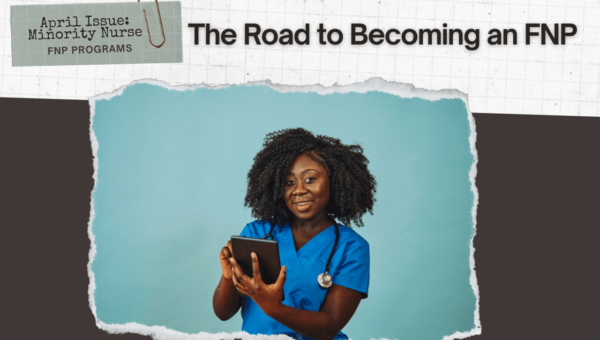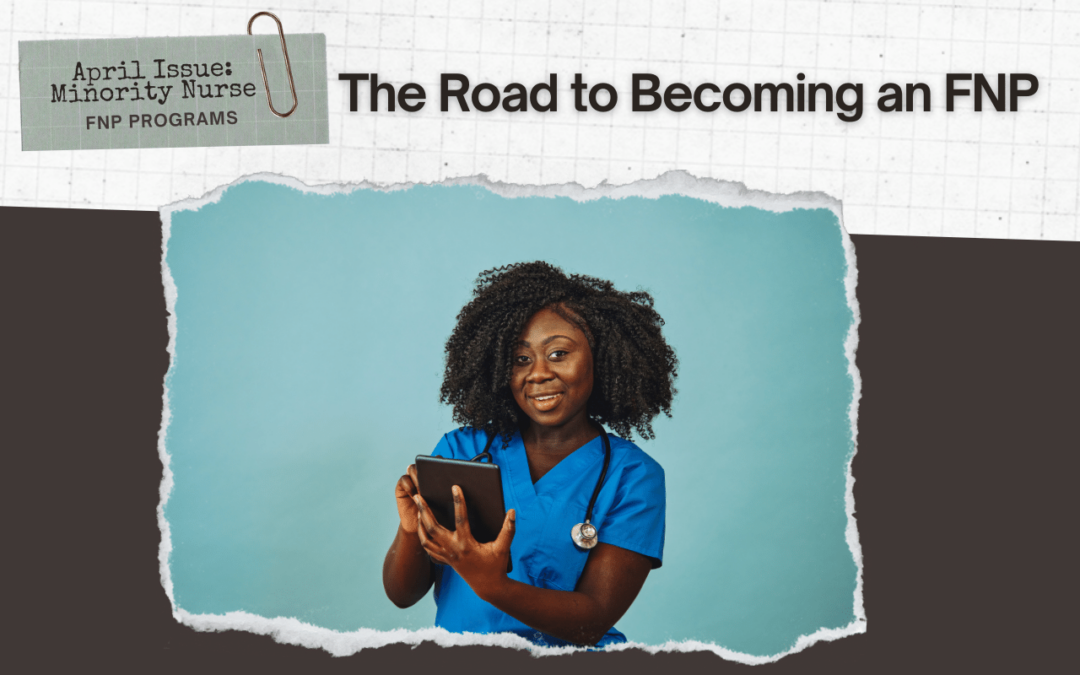Nurse practitioners (NPs) are essential healthcare providers who are excellent, skilled clinical resources for newborns and elderly patients. While there are many available NP career choices, the family nurse practitioner (FNP) is a trendy option among nurses seeking to become primary care providers with the authority to diagnose illnesses, order diagnostic tests, prescribe medications, and manage the care of patients across the lifespan.
If you’re a nurse who wants to become a family nurse practitioner, what does that avenue look like, and what hoops do you need to jump through to achieve your goal? And if you’re not a nurse, what additional work must be done to get there? Let’s examine the landmarks along the way to becoming an FNP.
Why Become an FNP?
Becoming an FNP has pros and cons, so considering the many possibilities available in advanced practice nursing, it’s prudent to do your due diligence.
PROS:
Earning power: According to the U.S. Bureau of Labor Statistics (BLS), nurse practitioners, nurse midwives (CNMs), and nurse anesthetists (CRNAs) earned a median annual salary of $125,900 in 2022, with a mean hourly wage of $60.53. While the much higher salaries of CRNAs may admittedly skew the numbers higher, there’s no arguing that NPs are doing well for themselves.
Job growth: As another incentive for those considering the NP path, the BLS projects 38% job growth for NPs through 2032. When weighed against projected job growth of 6% for RNs and 3% for MDs, the attractiveness of a career as an NP can appear exceptionally bright.
Full practice authority: The state practice environment for NPs is improving slowly. The American Association of Nurse Practitioners (AANP) reports that in the states where full practice authority has been granted, “state practice and licensure laws permit all NPs to evaluate patients; diagnose, order and interpret diagnostic tests; and initiate and manage treatments, including prescribing medications and controlled substances, under the exclusive licensure authority of the state board of nursing. This is the model recommended by the National Academy of Medicine, formerly called the Institute of Medicine, and the National Council of State Boards of Nursing.”
CONS:
Future license portability: At some point in the future, the APRN Compact will become a reality like it is for millions of registered nurses. However, more states still need to sign on to begin implementing even a fraction of a potential compact.
Stress and burnout: Recent statistics show a high level of burnout, depression, and anxiety among NPs, primarily due to workplace stress, overwork, perceptions of lack of respect from colleagues and patients, and insufficient salaries.
The 15-minute visit: Since most FNPs work in a clinic or office setting, the now common 15-minute office visit can starkly contrast with the relational aspects of bedside nursing that many nurses enjoy as RNs.
The FNP Career Pathway
For Non-nurses:
For non-nurses wanting to secure their future by becoming a family nurse practitioner, the first step is to become an RN through an associate degree in nursing (ADN) program or a bachelor of science in nursing (BSN) program.
Alternatively, a non-nurse can also pursue a direct-entry MSN program, an accelerated path where the student simultaneously earns a BSN and an MSN. Specific direct-entry programs bypass the BSN entirely. Most of these programs will require the completion of prerequisites that will likely include some combination of anatomy and physiology, biology, chemistry, nutrition, sociology, psychology, statistics, and microbiology.
For Registered Nurses:
Registered nurses with an ADN who want to pursue a career as an FNP will want to complete an RN-to-BSN bridge program and then apply to an MSN program with an FNP track. Registered nurses can also consider an RN-to-MSN program, which allows students to take core BSN courses while completing their MSN.
Potential MSN and FNP students should know there is a strong movement afoot to make the Doctorate of Nursing Practice (DNP) degree the entry-level requirement for becoming a nurse practitioner. While a goal of 2025 has been set, this change has yet to be codified as an absolute requirement, but the day for such a requirement is fast approaching.
The FNP Certification Exam
No matter what type of program is pursued to become a family nurse practitioner, graduates must apply for the 150-question FNP certification exam administered under the auspices of the American Academy of Nurse Practitioners Certification Board (AANPCB). Clinical domains covered by the exam include:
- Newborn
- Infant
- Toddler
- Child
- Adolescent
- Young Adult
- Middle Adult
- Older Adult
Students can expect to be tested regarding aspects of assessment, diagnosis, planning, and evaluation of patients across the lifespan in areas of knowledge that include:
- Health assessment
- Pathophysiology
- Therapeutics
- Evidence-Informed Practice
The Life of the FNP
Licensed and certified family nurse practitioners can work in a wide variety of settings, including but not limited to:
- Physician practices
- NP-run clinics and practices
- Private practice
- Community health centers
- School-based health clinics
- Urgent care centers
- University and college health centers
- Occupational health clinics
- Acute care hospitals (e.g., emergency department)
- Skilled nursing and long-term care facilities
- Hospices
- Retail clinics (e.g., in pharmacies)
- Correctional facilities
- Holistic health clinics and practices
- Pain clinics
- Insurance companies
- Dialysis centers
- Clinical research facilities
- Substance abuse treatment programs and facilities
FNPs can earn additional postgraduate certifications in areas like psychiatric/mental health. APRNs can also become eligible for leadership positions in many clinical settings.
While those considering FNP certification may be worried about the limits of the increasingly common 15-minute patient visit, FNPs can find plenty of practice areas with other types of structures for patient interaction.
With predictions for astronomical job growth and opportunity in the years to come, family nurse practitioners will undoubtedly be in great demand nationwide. Pursuing the career path of the FNP is not for everyone, but the plethora of potential opportunities will attract students from all walks of life far into the foreseeable future.
- The Road to Becoming an FNP - April 22, 2024
- Embracing Cultural Competence and Cultural Safety - April 17, 2024
- Advancing Your Nursing Career Through Certifications - March 25, 2024



